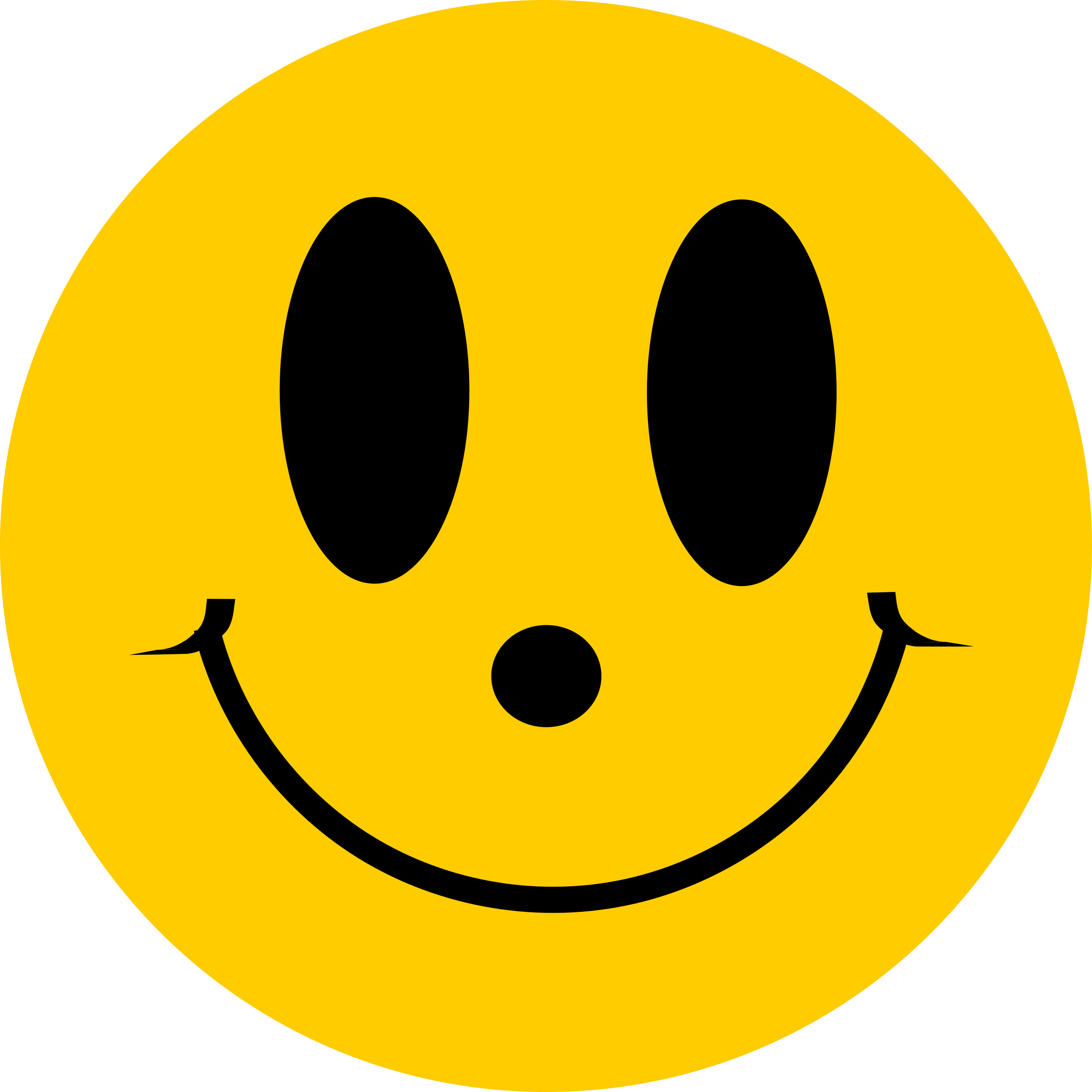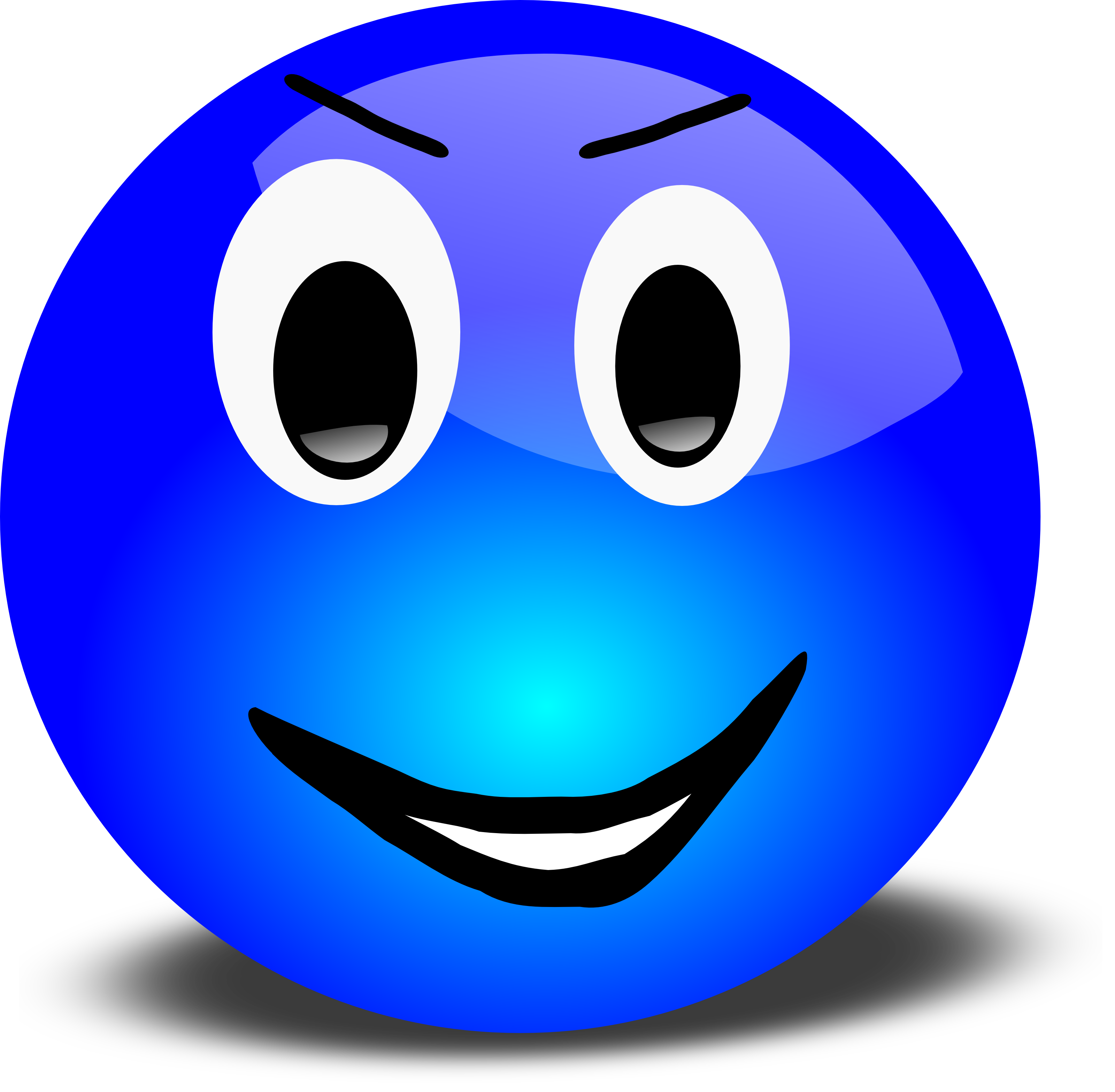There's a curious buzz starting to get around about a fresh sound, a kind of music that seems to speak a language we all know, yet it feels completely new. This emerging style, which some folks are calling "Smiley Rap," appears to be doing something quite interesting with how we share feelings and thoughts through song. It's almost as if the very small pictures we use every day to show how we feel are now finding their way into the rhythm and words of tunes. This kind of music, you know, could really change how we connect with what we hear.
This whole idea of "Smiley Rap" centers on bringing the simple, clear expressions of our digital conversations into a musical form. Think about those little yellow faces on your phone or computer screen, the ones that show a wide range of feelings and different situations. They are, in a way, a universal way to get a point across quickly. So, this music aims to take that quick, visual communication and turn it into something you can listen to, giving a voice to those silent, tiny pictures we all use.
It's a pretty interesting thought, isn't it? How these small, expressive images, which come straight from your emoji keyboard and show everything from a calm smile to a face with spiral eyes, could become the building blocks of a new kind of musical expression. This particular kind of rap, it seems, looks at how those little pictures work to show happiness, a bit of sadness, or even surprise, and then tries to put those very same feelings into the beats and spoken words. It's truly a different way to think about music, that's for sure.
- Church Opening Prayer
- What To Write In Goddaughters Christening Card
- Wolverines Claws
- Fat People With Short Hair
- What Happened To Lex Lugar
Table of Contents
- The Emergence of Smiley Rap - A Fresh Sound
- What Defines the Smiley Rap Style?
- Decoding the Emotional Language of Smiley Rap
- The Visual Identity of Smiley Rap
- Could Smiley Rap Change How We Hear Music?
The Emergence of Smiley Rap - A Fresh Sound
There's a new sound getting some attention, a musical expression that feels quite different from what we usually hear. This particular style, which some people are calling "Smiley Rap," really seems to connect with how we communicate in our daily lives, especially with those small, expressive pictures we send back and forth. It’s almost as if the very emotions and situations depicted by these little faces are being turned into sounds and spoken words. This kind of music, you know, could actually offer a whole new way for people to feel connected to what they are listening to. It’s a pretty interesting development, in some respects.
This whole idea for "Smiley Rap" takes its cues from the tiny images found on your phone or computer, the ones that show a wide array of feelings and different moments. These little pictures, which are, so, a pretty direct way to get a point across without saying much, are now inspiring a musical form. The goal here is to take that quick, visual shorthand and turn it into something you can hear, giving a voice to those quiet, small pictures we all use. It’s a very clever way to approach songwriting, actually.
It makes you think, doesn't it? How these small, expressive images, the ones that come straight from your emoji keyboard and show everything from a face with a modest smile and rosy cheeks to a face exhaling, could become the foundational elements of a fresh kind of musical storytelling. This particular kind of rap, it appears, really looks at how those little pictures work to show happiness, a bit of surprise, or even a tear, and then tries to put those very same feelings into the beats and the spoken lines. It’s a rather unique approach to creating art with sound, to be honest.
- What Happened To Dr Ross On Vet Life
- Seth Rollins Ethnicity
- Dynasty Actors
- Who Did Hannah From Below Deck Marry
- Mens 400 Meter World Record
Who is the Visionary Behind Smiley Rap?
Every new artistic movement usually has someone, or a group of people, who first thought of it, right? For what we are calling "Smiley Rap," the story goes that a person known as "Rhythm-Face" is the one who really got this whole idea going. Rhythm-Face, whose actual name is said to be Alex “Al” Chen, started thinking about how the simple, yellow faces we use to show feelings could be more than just quick messages. They wondered, could these expressions become the very soul of a song? That’s where the concept of putting the feeling of a calm smile or a face with tear into a rap began, you know.
Rhythm-Face apparently spent a lot of time just looking at the different kinds of emojis, especially those from the standard keyboard that show various emotions and states. They were very interested in how a simple yellow face with a modest smile, rosy cheeks, and soft, closed eyes could communicate so much without words. It was this deep interest in how these small pictures work that led to the first tracks of "Smiley Rap." They believed that if a picture could say a thousand words, then maybe a rap song could express a thousand emojis, in a way.
The idea for this kind of music, so, really took hold when Rhythm-Face noticed how many platforms, including Apple, show these smiley faces with relaxed eyebrows, giving them a generally positive and warm feeling. This observation made them think about how to build sounds and words around those positive feelings. Rhythm-Face wanted to create music that wasn't just about complicated stories, but about the simple, direct feelings we share every day, often through those little yellow faces. It's quite a distinctive approach, actually.
| Personal Detail | Information |
|---|---|
| Artist Name | Rhythm-Face |
| Real Name | Alex "Al" Chen |
| Origin | A keen observer of digital communication and human expression |
| Main Focus | Translating emoji emotions into musical forms |
| Key Inspiration | The universal language of smiley emojis and their meanings |
What Defines the Smiley Rap Style?
So, what exactly makes "Smiley Rap" stand out from other kinds of music? Well, it's pretty much about how it uses the simple yet powerful language of those little pictures we all know. This style of rap doesn't just talk about emotions; it tries to capture the very essence of how those yellow faces communicate feelings. For instance, a track might focus on the feeling of genuine happiness, much like a yellow face with smiling eyes and a broad, closed smile turning up to rosy cheeks would show. It’s a really direct way to get feelings across, that's what it is.
The sounds in "Smiley Rap" often have a certain bounce to them, a kind of lightness that matches the generally positive feeling of many smiley faces. But it’s not all sunshine, you know. Just like there are different kinds of smiley faces, this music also explores a range of feelings. You might hear a song that captures the feeling of a face with spiral eyes, suggesting a moment of being a bit dizzy or overwhelmed, or perhaps a piece that reflects the gentle sadness of a smiling face with a tear. It’s a very interesting mix, to be honest.
The beats and rhythms are usually quite approachable, not overly complicated, which helps keep the focus on the feeling being shared. The idea is to make the music feel as immediate and understandable as seeing one of those little pictures pop up on your screen. This means the overall sound tends to be quite clear, letting the feelings come through without a lot of extra noise. It’s a pretty smart way to make music that speaks to everyone, you know, in a way that feels very natural.
The Heart of Smiley Rap - Conversational Lyrics
When you listen to "Smiley Rap," one of the first things you might notice is how the words are put together. The lyrics are very much like a chat you might have with a friend, rather than a formal speech. They often use everyday language and simple phrases, which helps to make the music feel quite personal and easy to connect with. This conversational approach is a big part of what makes this style of rap feel so warm and inviting, just like a friendly message from someone you know. It's almost like the words are just flowing out, you know?
The songs in "Smiley Rap" also tend to describe feelings and situations in a way that mirrors how we use emojis. Instead of long, drawn-out descriptions, the words often create quick, clear pictures in your mind, much like a single yellow face can convey a whole mood in an instant. For example, a line might talk about a moment of pure joy, like that yellow face with smiling eyes and a broad, happy expression, rather than going into a detailed story about why someone is happy. This directness is a key part of its appeal, that's for sure.
And because the words are so straightforward, they really let the emotional core of the song shine through. This means that even without seeing the actual little pictures, you can almost feel the presence of that modest smile or that face exhaling just from the way the words are delivered. The goal is to make the listener feel what the song is about right away, without having to think too hard. It’s a very clever way to get feelings across, in some respects, using words that feel very much like a part of our daily conversations.
Decoding the Emotional Language of Smiley Rap
Understanding "Smiley Rap" means getting a feel for how it uses the emotional shorthand of emojis. It’s not just about throwing a few emoji names into a song; it's about taking the very essence of what those little pictures mean and putting that feeling into the music. Think about how a yellow face with a modest smile, rosy cheeks, and soft, closed eyes conveys a wide range of warm, positive feelings. "Smiley Rap" tries to capture that exact feeling in its sound and words. It’s a pretty cool idea, to be honest.
The songs often play with the different meanings behind various emojis, especially those that show people, including different appearances, hand gestures, body parts, activities, professions, or even fantasy characters. This allows the music to tell a story that is both simple and rich with meaning, using symbols that are already familiar to most people. For instance, a song might use the feeling of a particular hand gesture emoji to convey agreement or excitement, making the message very clear without needing many words. It’s a very direct way to communicate, you know.
And it's not just the obvious happy faces. "Smiley Rap" also looks at emojis like the face with spiral eyes, or the smiling face with tear, or even the face exhaling. These little pictures show more complex or nuanced feelings, and the music tries to bring those feelings to life through its rhythm and spoken parts. By drawing on this universal resource for emoji meanings and designs, the music aims to speak to a broader audience, in a way that feels very personal and easy to get. It’s a really clever way to explore emotions through sound, that's for sure.
How Do Emojis Shape Smiley Rap's Feelings?
It's interesting to consider how these small digital images actually shape the emotional depth of "Smiley Rap." The music doesn't just mention emojis; it uses their core meanings as a kind of emotional blueprint for the songs. If an emoji expresses genuine happiness and warm, positive feelings, then the "Smiley Rap" track built around that feeling will usually have a bright, uplifting sound and words that make you feel good. It’s almost like the emoji itself is giving the song its emotional direction, you know?
The way different platforms, including Apple, show these little faces also plays a part. For example, many of the smiley faces have relaxed eyebrows, which contributes to their calm and friendly appearance. This visual detail can inspire the overall mood of a "Smiley Rap" song, leading to tunes that feel laid-back and easygoing, even when the topic might be a bit more serious. It’s a very subtle influence, but it's definitely there, in some respects.
Furthermore, the variety of emojis, from those showing simple emotions to those representing specific actions or characters, gives "Smiley Rap" a wide range of emotional tones to work with. A song about overcoming a challenge might draw on the feeling of a determined face, while a lighthearted tune might capture the playful energy of a winking face. This means the music can go from being very happy to a bit reflective, all while staying true to its emoji-inspired roots. It’s a really versatile way to express feelings, to be honest.
The Visual Identity of Smiley Rap
Beyond the sounds and the words, "Smiley Rap" also has a strong visual side, which is, of course, heavily influenced by the very things that give it its name: emojis. When you think about "Smiley Rap," you probably picture those bright yellow faces, perhaps with a broad, closed smile or a modest one, just like the ones on your phone. This visual connection is a big part of what makes this musical style so recognizable and, in a way, so easy to understand. It’s a very direct link to how we communicate visually every day.
The artists involved in "Smiley Rap" often use these little pictures in their performances, their album covers, and their music videos. You might see a performer wearing clothes with large smiley faces, or a video that uses animation inspired by the simple, clear designs of emojis. This visual consistency helps to reinforce the core message of the music, making it clear that this style is all about expressing feelings in a very direct and universally understood way. It’s a pretty smart way to build a brand, actually.
This visual approach also helps to make the music more accessible to people around the world, as emojis are, in some respects, a global language. Whether someone speaks English, Spanish, or Japanese, the meaning of a yellow face with smiling eyes is usually understood. This means that the visual elements of "Smiley Rap" can help bridge language barriers, allowing the feelings conveyed in the music to reach a wider audience. It’s a really clever way to connect with people, you know, through shared visual cues.
Seeing the Music - The Look of Smiley Rap
The look of "Smiley Rap" is just as important as how it sounds. Imagine album art that features a yellow face with a modest smile, rosy cheeks, and soft, closed eyes, perhaps with relaxed eyebrows, much like the common emoji designs. This kind of artwork immediately tells you what the music is about: simple, direct emotions and positive vibes. It's a very clear statement, in a way, about the kind of feelings the artist wants to share.
Music videos for "Smiley Rap" often use bright colors and clean lines, mirroring the crisp, clear design of emojis. You might see animated versions of the artists themselves, or even animated emojis acting out the lyrics. This visual storytelling helps to make the emotional content of the songs even more impactful, allowing listeners to not just hear the feelings but also to see them. It's a pretty engaging way to experience music, that's for sure.
Even the way artists present themselves on social media, so, often includes a heavy use of smiley faces and other related emojis. This consistent visual identity helps to build a strong connection with their audience, making them feel like they are part of a community that understands this new language of emotional expression. It’s a very modern approach to connecting with fans, you know, using the tools of everyday digital life.
Could Smiley Rap Change How We Hear Music?
It’s a big question, isn’t it? Could "Smiley Rap" actually change the way we listen to and connect with music? The way it focuses on direct, easily understood emotions, much like those little yellow faces on your keyboard, might just be something that really resonates with people. In a world where quick communication is key, a musical style that gets straight to the feeling without a lot of fuss could be very appealing. It's a very different approach from traditional music, to be honest.
By making emotions so central and so clearly expressed, "Smiley Rap" might encourage other artists to think more about how they convey feelings in their own work. It shows that there’s a lot of
Related Resources:
Detail Author:
- Name : Claud Blick
- Username : damaris83
- Email : xwilderman@mclaughlin.com
- Birthdate : 1978-07-20
- Address : 37729 Pearlie Centers Suite 398 Kilbackland, NJ 96947
- Phone : (646) 875-3932
- Company : Glover-Rice
- Job : Postal Service Clerk
- Bio : Consequuntur totam cumque eos quibusdam inventore. Atque similique hic quas vel pariatur laborum. Vitae voluptate ut sit eum et. Molestias explicabo consequatur totam illum sequi repellendus.
Socials
linkedin:
- url : https://linkedin.com/in/oma.reinger
- username : oma.reinger
- bio : Est placeat fuga occaecati.
- followers : 4943
- following : 2580
twitter:
- url : https://twitter.com/oma.reinger
- username : oma.reinger
- bio : Sit laudantium quidem dolorum aut. Repellat eos vitae animi libero praesentium enim perspiciatis. Saepe et sint reiciendis voluptatum nostrum vel.
- followers : 5749
- following : 831


